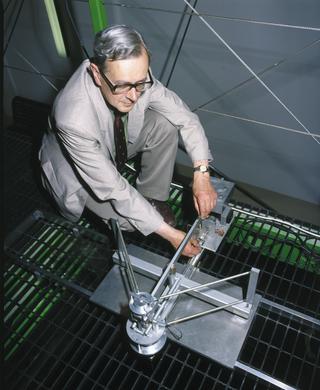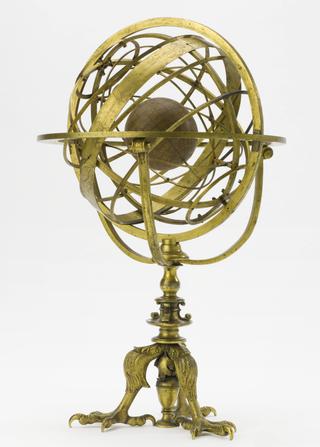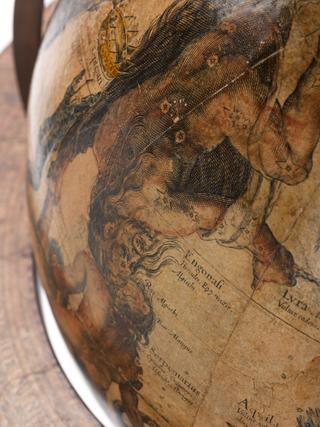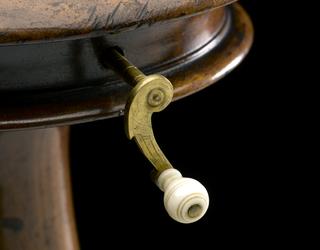
Brass Hindu planispheric astrolabe with inlaid silver sanskrit script, commissioned by Manna Lala in Jaipur, 1836.
Dated 1836, this Hindu astrolabe made of brass inlaid with silver was commissioned by Manna Lala from an instrument maker in Jaipur, India. This front view shows the moveable fretwork plate called the rete that denotes star positions by curved pointers. The astrolabe is in essence a model of the heavens that an astronomer could hold in their hands. Popular in Medieval and Renaissance Europe, its many uses included timekeeping, astrology and surveying. The astrolabe is a two-dimensional depiction of a celestial sphere whose layout is achieved using the mathematical technique of stereographic projection. From its origins in the Ancient World, Islamic astronomers developed the astrolabe from whom it spread to India.




